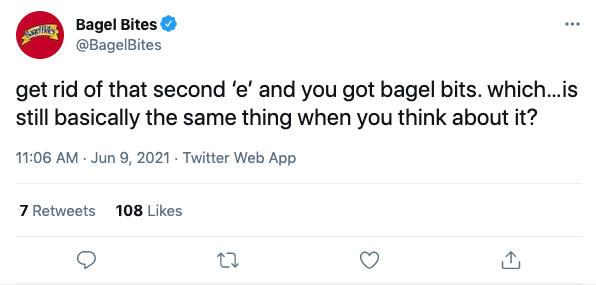We’re always online somehow. You’re probably reading this on your phone right now. If you’re online, then so are your customers, and it’s important for your business to have an online presence as well. Products in stores have packaging and history to base brand loyalty and recognition off of, but how can a new startup or online-only brand do the same in a digital era?
Difference between branding and marketing
You may think that if your goal is to get people to make a purchase, then branding doesn’t need that much effort- the bulk of your time should be spent on marketing your offerings, right? Not so much: marketing is looking for a one time purchase- promoting a sale, a product, a service, for immediate purchase. Branding promotes a relationship and sense of belonging, meant to inspire long term loyalty and recurring purchases from customers to maintain that sense of community.
Having an established brand and established relationship with your customer base makes marketing work better- people may be more likely to react to an ad for a product or sale if they’re familiar with your brand and have a positive perception of it.
Important elements of digital branding
Logo & Brand Identity
Same as what would be used for any physical assets- a consistent font library, color palette, and photography style go a long way online. They connect all of your digital presence- your Instagram matches your product photography, your banner ads have a similar tone to your twitter account, your newsletter looks and feels like your website.


Razor company Billie has a distinct color palette and photography style used across all platforms, making their product recognizable even without a logo or caption.
Tone of voice
Keeping the same tone across all platforms helps build a bond with customers and also establish what space you occupy to them- are you an honest and trustworthy business? Something fun and youthful? Maybe witty and sarcastic? Your tone ensures consistency across platforms, so your Twitter, Instagram, and website all sound the same instead of three different personalities. You don’t want to have a witty twitter, but a super corporate and stuffy website. People won’t feel a connection to that, because they won’t know which part of it is an act. Are you pretending to be funny online to go viral? Or are you really not that professional and trying to cover it up by acting extra serious? They won’t know what to expect, and won’t feel the same familiarity.
You can always control how casual the tone is- you can be a little more relaxed on Twitter and a little more put together on your website or newsletter, but keep the overall feeling consistent instead of flip flopping to match what you think fits the platform.



Wendy’s tone continues onto Instagram, where they post Baconator memes and Secret Menu Mashups. They showcase their offerings without blatantly stating “this is a product we have for sale!” and while using the same millennial humour.
Social Media
Social media will be the largest digital connection you have with customers in establishing a relationship. Since people will use their personal accounts to follow brands and friends alike, you’ll be able to integrate yourself into their feed and feel more personally connected to them.
It is important not to get too friendly, though. You are still a business. It’s best to avoid anything too slang-y, too youthful, or anything that strays from your established brand and tone.

Part of a “half-heartedly millennial” campaign by Allegra, the use of AAVE and overall levity of the tone doesn’t really mesh with a brand that up until this point has been a fairly clinical, professional pharmaceutical company.
Remember that ultimately you are a business, not an individual with wavering interests and hobbies. While your audience’s tastes may change, you should remain relatively consistent. If you’re thinking it’s time to change how you act on social media, it may be time for a larger rebrand.

Bagel Bites decided to hop on the fan Twitter train back in August, becoming a bona fide BTS stan overnight, boosting their engagements into the thousands

They’ve since stopped mentioning BTS, and with that, have lost a majority of their engagements
Content
Content marketing is a way to affirm your brand’s identity beyond your product or service. It gives you a place to express your tone, content to share on social media, and a reason to visit your website or sign up for a mailing list beyond just purchasing.
Creating content that fits your brand allows customers to more touchpoints to engage with you. If the only place your customers see you is when they’re spending money, the weaker the bond will be. If they see you’re providing advice, opinions, tips, writing or videos for free, it gives them something to consume and form a relationship over that isn’t just your product. It also allows you more room to explain why your brand and offerings are the better choice over your competition. You can present your brand as a solution, not just a product.


Using Wendy’s again, they use content marketing to build excitement over new products and connect with customers on social media to create a community feeling and a way to interact with the brand beyond just eating at a Wendy’s restaurant.
Combining digital branding with marketing
Building an SEO optimized website ensures that your brand shows up when people search for it- building credibility. Including keywords and metadata also ensures that your product shows up when people search up the right keywords- if your brand identity focuses around being eco-friendly, you might want to make sure that your site includes keywords like sustainable, green, environmentally friendly, or recycled, rather than excessive mentions of things like affordability or quality. If your brand is all about being affordable and accessible to all, then those are the keywords you’d want to use more, over sustainability.
Influencers are also a way to combine your brand and marketing. They offer a way to connect with a new audience using the existing trust they have with their own audience. But influencers should be chosen carefully, and with your brand in mind. They’re another extension of your brand online, not just a quick way to get customers. So when choosing an influencer, look beyond follower count or engagement. Kylie Jenner may be one of the most followed people on Instagram, but she won’t be much help if your brand is in the technology space. Even if your chosen influencer is in the same space as you: influencers that are constantly getting into fights and scandals with other influencers might not be the best choice for a brand with a gentler, kinder identity. (However, if you have a don’t-care, hashtag-savage brand, then influencers like that might be right up your alley).
Taking advantage of established connections
Newsletters can be a great way to interact a little more personally with established customers or interested parties. Regularly showing up in their inbox with content reaffirms your brand, and can offer a cleaner segue into offering a more purchase-oriented ad, like a sale or coupon.
Same with digital ads. Using an established brand voice and identity can make you immediately recognizable when people see an ad in the wild, and that bond you have with them can help that ad be more effective in making the push to purchase.
Ultimately digital branding is using the web as your personal storefront- since online companies don’t always have brick and mortar stores, or physical products, digital branding is a way to establish that same brand loyalty and recognition that in-person stores would.